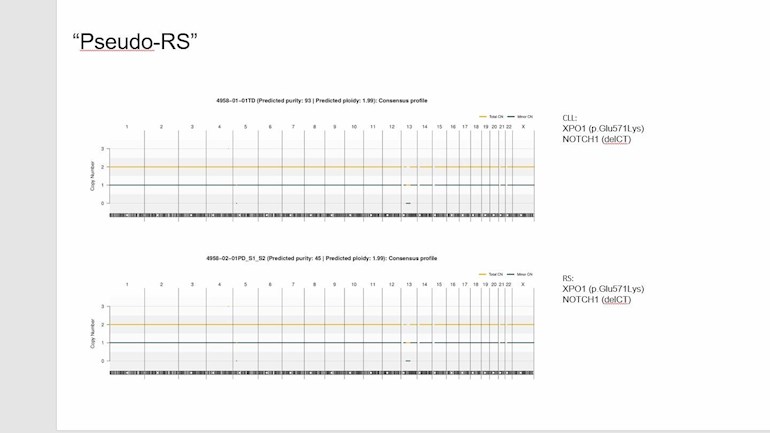Hi.
As I mentioned earlier, Professor Elias Campo did a study of my Ricther to try to understand the behavior
I copy and paste the result
Our cases are helping that Richter's transformation is not the great unknown within the world of CLL.
We have sequenced the entire genome of the CLL and the lymph node in which we diagnosed Richter Syndrome. The quality of the ganglion DNA is suboptimal because it has been fixed in formalin and included in paraffin and has some technical limitations. In any case, and even knowing these limitations, we have done the sequencing because we believe that we can obtain some conclusions as I believe that this has been the case.
The most important is that we see the same genetic alterations in the initial CLL and in the lymph node sample, fundamentally a deletion of chromosome 13q and two mutations in the XPO1 and NOTCH1 genes. I attach some images in case you want to share them with your doctors. We do not see additional alterations in the lymph node sample and in particular we do not see any of the other alterations that have been identified in conventional Richter cases, both in those published and in those that we have studied. This result makes me think that the lymph node injury, although histologically it is a large cell lymphoma, biologically it has not acquired the alterations of this type of transformation. This finding supports the idea that it is not a conventional Richter like the ones we know. It really is a new situation that we must study more thoroughly as far as possible in other patients.
I hope you find it of interest and help.
Thank you very much again
